This image shows the galaxy cluster MACS J1149.5+2223 taken with the NASA/ESA Hubble Space Telescope and the inset image is the galaxy MACS1149-JD1 located 13.28 billion light-years away observed with ALMA. Here, the oxygen distribution detected with ALMA is depicted in green.
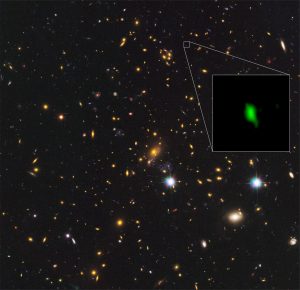
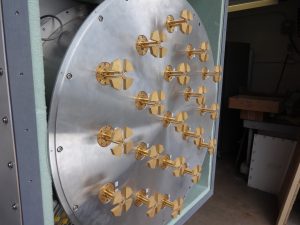
New Technology Offers to Broaden Vision for Radio Astronomy
To accelerate the pace of discovery and exploration of the cosmos, a multi-institution team of astronomers and engineers has developed a new and improved version of an unconventional radio-astronomy imaging system known as a Phased Array Feed (PAF). This remarkable instrument can survey vast swaths of the sky and generate multiple views of astronomical objects with unparalleled efficiency. This image shows the 19-element phased array feed developed by the NRAO CDL.
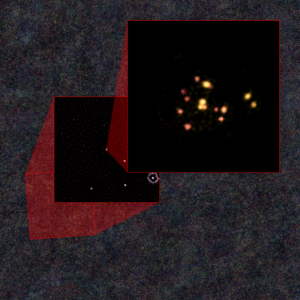
Zoom In to Young Galaxy Cluster
Zooming in to the galaxies discovered by ALMA that are evolving into a galaxy cluster. The outer field is from data taken by the Hershel Space Observatory. The middle image — a portion of a much-wider survey by NSF’s South Pole Telescope — uncovered the distant galactic source that was studied by ALMA to reveal the 14 galaxies.

ALMA Reveals Inner Web of Stellar Nursery
This spectacular and unusual image shows part of the famous Orion Nebula, a star formation region lying about 1350 light-years from Earth. It combines a mosaic of millimeter wavelength images from the Atacama Large Millimeter/submillimeter Array (ALMA) and the IRAM 30-meter telescope, shown in red, with a more familiar infrared view from the HAWK-I instrument on ESO’s Very Large Telescope shown in blue. The group of bright blue-white stars at the left is the Trapezium Cluster, hot young stars that are only a few million years old.
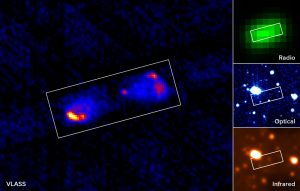
Sharper Image of Galaxy with VLASS
The sharpest radio view ever made of such a large portion of the sky! This galaxy, observed by the new VLA Sky Survey, resides near the constellation Draco in the northern hemisphere. No sources are detected at the radio galaxy’s position in optical wavelengths (center right panel), but there is a hint of the central galaxy at infrared wavelengths (bottom right panel). The top right panel shows the radio source from our previous (NVSS) survey, but the resolution was too faint to work out the details. However, our new survey has the resolution to reveal the distinct features of the radio lobes from a supermassive black hole found at the heart of most galaxies!
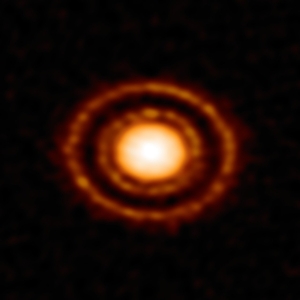
Young Planet Makes a Scene
Nestled in the Ophiuchus star-forming region, 410 light-years from the Sun, a protoplanetary disk is slowly taking shape. Dust emission from AS 209 reveals a curious pattern of rings and gaps surrounding the young star.
Protoplanetary disks are composed of gas and dust particles, forming after the collapse of a molecular cloud. As matter from the newly formed star begins to fall inward, the material will flatten into a disk around the young star. These disks provide the foundational material that one day will become orbiting planets, moons and other minor bodies.
At less than a million years old, this system has two clearly distinct gaps carved out from the disk. The wide outer gap is a largely a dust-free zone, suggesting a Saturn-like planet may be forming. The distance between this gap and its host star is more than three times the distance between Neptune and the Sun in our own solar system. The thinner, inner dust gap could have been formed by a smaller planet nearer to the star, or by perturbations in the disk caused by same proposed planetary body that carved the larger outer gap in the disk.
This striking image was captured with the Atacama Large Millimeter/submillimeter Array (ALMA) telescope on the Chajnantor Plateau in Chile.





